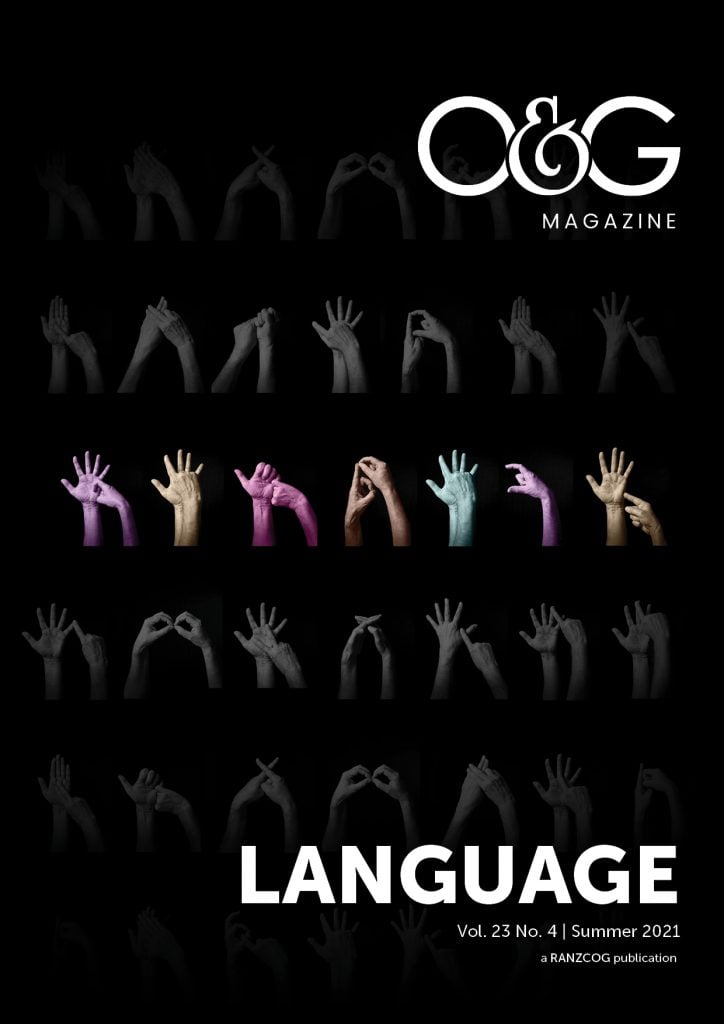Rad, cool, FOMO, YOLO, Flex, No Cap, On Fleek… Aside from an unexpected and well-placed swear word, inserting ‘on trend’ lingo as a means of building meaningful rapport with adolescents is cringe-worthy and rarely, if ever, effective.
Relatively new to the industry, we (Alana and Meg) have spent the majority of our midwifery careers working in the Young Women’s Midwifery Group Practice (MGP) at Logan Hospital, just south of Brisbane, Queensland. The Logan demographic is extremely diverse and complex, which is reflected in the women who come into our care. The birth rate for women between 15–24 years was 50% greater in the Logan LGA compared to the Queensland average, with the number of births to teenage women in particular, significantly higher.1 It is known that teenagers in Australia who become pregnant are more likely to have poor mental health outcomes, low levels of health literacy, have experienced unstable housing and to be socioeconomically disadvantaged compared to teenagers who do not become pregnant.2 Effective communication is fundamental in our practice in order to build rapport and provide quality woman-centered care.
Adaptive modes of communication
It is important to have open communication with the women in order to provide individualised care; however, barriers exist for health professionals when communicating with young women. We have found being considerate and utilising the mediums available to us helpful in creating a safe space to communicate with the young women. In MGP, the women are given our work phone number and are encouraged to call us with any questions or concerns throughout their pregnancy, labour/birth and postpartum period. In our experience, the women are initially reluctant to answer a call from an unknown number, let alone talk on the phone with a health professional about their newly discovered pregnancy. The constraints enforced by mainstream care have created barriers that young mums describe as being ‘tense’, ‘too rigid’, ‘not friendly’ and ‘impatient’.3 In MGP, we have adapted to this cohort of young women by initiating contact and communicating via text message. The women find this method of communication more comfortable as they are able to do their own research, talk things through with people they trust, respond with questions and agree to engage without the pressuring feeling of a phone call. Similarly, young mums will often feel more comfortable asking awkward questions via texts, such as ‘will an orgasm hurt my baby?’ Of course, it is reiterated from the outset that any concerns regarding the immediate wellbeing of mum or baby needs to be communicated via a phone call.
Relatable approach to education
Often the young women we work with have had very limited experience and exposure to birth. We have noticed women become more engaged, willing to ask questions and are able to comprehend information when it’s delivered in a way that is relevant to them. To do this, Alana will often cast her mind back to when she was a teenager and what she knew about pregnancy, birth and female anatomy – which she admits was not much! Alana will often relate her education to something familiar to the young woman. For example, when explaining the anatomy of the female reproductive system and function of the cervix, Alana will discuss inserting a tampon to explain the cervix and location of baby. Women are often surprised to learn that all the dilation takes place inside their body and changes to the vagina cannot be seen until the late stages of the birth process, demonstrating the need for internal vaginal exams. Furthermore, Hollywood’s cinematic portrayal of birth can create unrealistic expectations. We enjoy having conversations with our new mums about how unlikely it is that they will be walking through Kmart, when all of a sudden, their waters break everywhere and a baby comes flying out! This creates a lighthearted platform to explore and segue into realistic conversation about birth and what to expect.
Referring back to her teenage years is not quite so easy for Meg. Instead, she makes use of the ‘What to Expect’ brochure that all of our young women are given. Meg slowly works through elements of the brochure at each appointment. This way, the women have access to the same information when they go home and can revisit and review if they don’t remember or understand something that was discussed. Meg encourages her clients to interact with the document: write questions, highlight areas of intrigue for further discussion and identify areas of concern – all which contribute to forming birth preferences. Similarly, sending educational pictures or short videos via texts creates a reference point that they can reference back to at a time that works best for them and when learning that information feels relevant.
Communication techniques
It seems obvious, but two of the most successful communication techniques we utilise are repetition and recall. Arguably, the most important information we share with our women is ensuring they know when to contact their midwife and signs of an unwell baby. Asking women to explain ‘what might you be experiencing if you thought you were in labour? And how would that be different to ligament pain?’ or ‘what might your baby be doing or not doing to show they aren’t well?’ is helpful in highlighting gaps in knowledge and level of comprehension. It creates opportunity for clarification and often the women are more engaged in the ensuing conversation as they become more attuned to their own knowledge deficit.
Gentle conversations
For many young mums, the responsibility of growing a human can be overwhelming and isolating, particularly when it comes to discussing ‘normal’ fetal movements as per the Safer Baby Bundle. Generally, the women we care for have not had an opportunity to hold such a high level of responsibility or build trust in their body and their decision making. If they can’t ask for anyone else’s opinion or advice, they may find themselves solely responsible for an answer that, if ‘incorrect’, can have incomprehensible consequences. Asking a young mum ‘is your baby moving normally?’ is very direct and can immediately instill panic. We try to soften our questioning to ask ‘how is baby moving?’ and prior to this discussion we might comment on baby’s movements while attending to an abdominal palp, or making light of baby’s movements keeping mum awake all night. This is in no way to coerce a particular answer, but rather to create a positive frame of reference to help temper what can be a very anxiety-inducing questions.
Encouraging autonomy
Finally, we strongly recognise that our role in continuity of care is creating opportunities for our women to build confidence in themselves and the ability to advocate for their needs and, as new mums, to advocate for the needs of their family. Our clients are often still in school or have only recently finished and are familiar with the power dynamics associated with people in positions of authority. Consequently, they often minimise their own voice, trusting blindly in their care providers and hold a perception that asking questions of authority can be negatively received. In order to facilitate women-centered care, it is important that our women understand they can ask questions, decline care options and that this will be heard and respected. Our clients are acutely aware that they are allowed to say ‘no’ to any level of intervention and are celebrated when they question a particular pathway of care.
Our feature articles represent the views of our authors and do not necessarily represent the views of the Royal Australian and New Zealand College of Obstetricians and Gynaecologists (RANZCOG), who publish O&G Magazine. While we make every effort to ensure that the information we share is accurate, we welcome any comments, suggestions or correction of errors in our comments section below, or by emailing the editor at [email protected].
References
- Department of Health. Health Indicators 2018: Logan Local Government Area, Metro South Health. Brisbane 2018. Available from: metrosouth.health.qld.gov.au/sites/default/files/content/health-indicators-2018-logan-local-government-area-metro-south-health.pdf.
- Australian Human Rights Commission. Children’s Rights Report 2017. Sydney: Australian Human Rights Commission, 2017. Available from: humanrights.gov.au/sites/default/files/document/publication/AHRC_CRR_2017.pdf
- Bora Kim & Kate White. How can health professionals enhance interpersonal communication with adolescents and young adults to improve health care outcomes?: systematic literature review. International Journal of Adolescence and Youth. 2018;23(2):198-218. DOI: 10.1080/02673843.2017.1330696







Leave a Reply